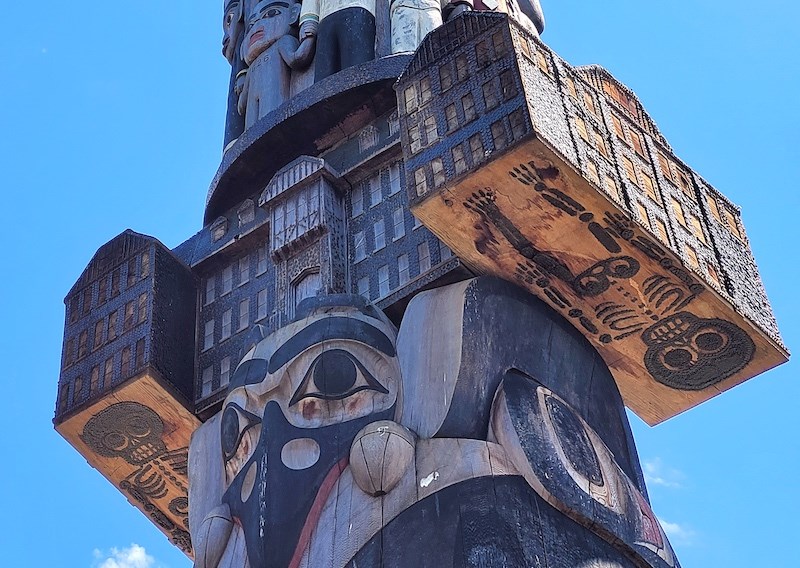Dear Editor,
As the tragedy of residential schools continues to unfold in our country, I wanted to share an experience I had a couple of months ago. While visiting a park at the University of British Columbia with my children, I decided to visit a large totem pole located across the street. We've passed by it a handful of times before, but I've never taken the time to understand what this Haida pole signified. It turned out it was called the Reconciliation Pole.
At the time of our visit, it was only a little over a week after the discovery of the 215 children found buried at a former residential school site in Kamloops, B.C.
As I stood and looked up at the Reconciliation Pole, I was stunned. There, on the underside of two suspended residential schoolhouse replicas were two big skeletons in bold, black oxidized copper nails. While taken aback, a man approached me and said he helped when UBC erected this pole, back in April of 2017.
"The skeletons..." I said, pointing upwards.
The man chuckled and humbly said, "Yeah, the carver told us there were buried children under those schools... We all thought he was a little crazy, y'know? And then we all heard the news last week... and well, he was right."
The signage for the Reconciliation Pole reads, “68,000+ copper nails covering areas of the pole are in remembrance of the many school children who died at Canada’s Indian Residential Schools – each nail commemorates one child.”
Each one of those nails was hammered into the pole by residential school survivors, their families, school children and members of the public.
While my kids are still too young to grasp the grief and shock of what really happened at residential schools, my oldest is very interested in First Nations art and totem poles. We took the time to read the story carved on the pole. We are learning together.
The carver which the man was referring to is 7idansuu (Edenshaw), James Hart, Haida Hereditary Chief and Master Carver. I have no doubt that the master carver knew the copper nails, against the light wooden surface, would oxidize to be a bold, black colour over time. Photos that the media took when the pole was raised barely show the light copper skeletons. But darker and louder they've become, waiting for someone to take notice and listen. I appreciate that foresight and brilliance, although the symbolism is utterly heartbreaking.
I am holding space for the grief we feel and am listening to Indigenous voices that have gone unheard. I am committing to learn about Indigenous history. I also know that dark chapters from my country’s past do not change my love for my home. But the awareness will make me work harder at making our country better. After all, as a Japanese Canadian, we too continue to hold the country accountable for the dark chapters of the Internment.
I will make mistakes but I want to be a better ally. I don’t think you’re crazy. I’m listening now.
Yumiko Sasakawa
For anyone wanting to visit the Reconciliation Pole, it is located on the south side of UBC campus, across from the Forestry Science Building at 2373-2435 Main Mall in Vancouver.
Sasakawa is the founder of the Vancouver Playgrounds website. She is on Instagram @vancouverplaygrounds.



